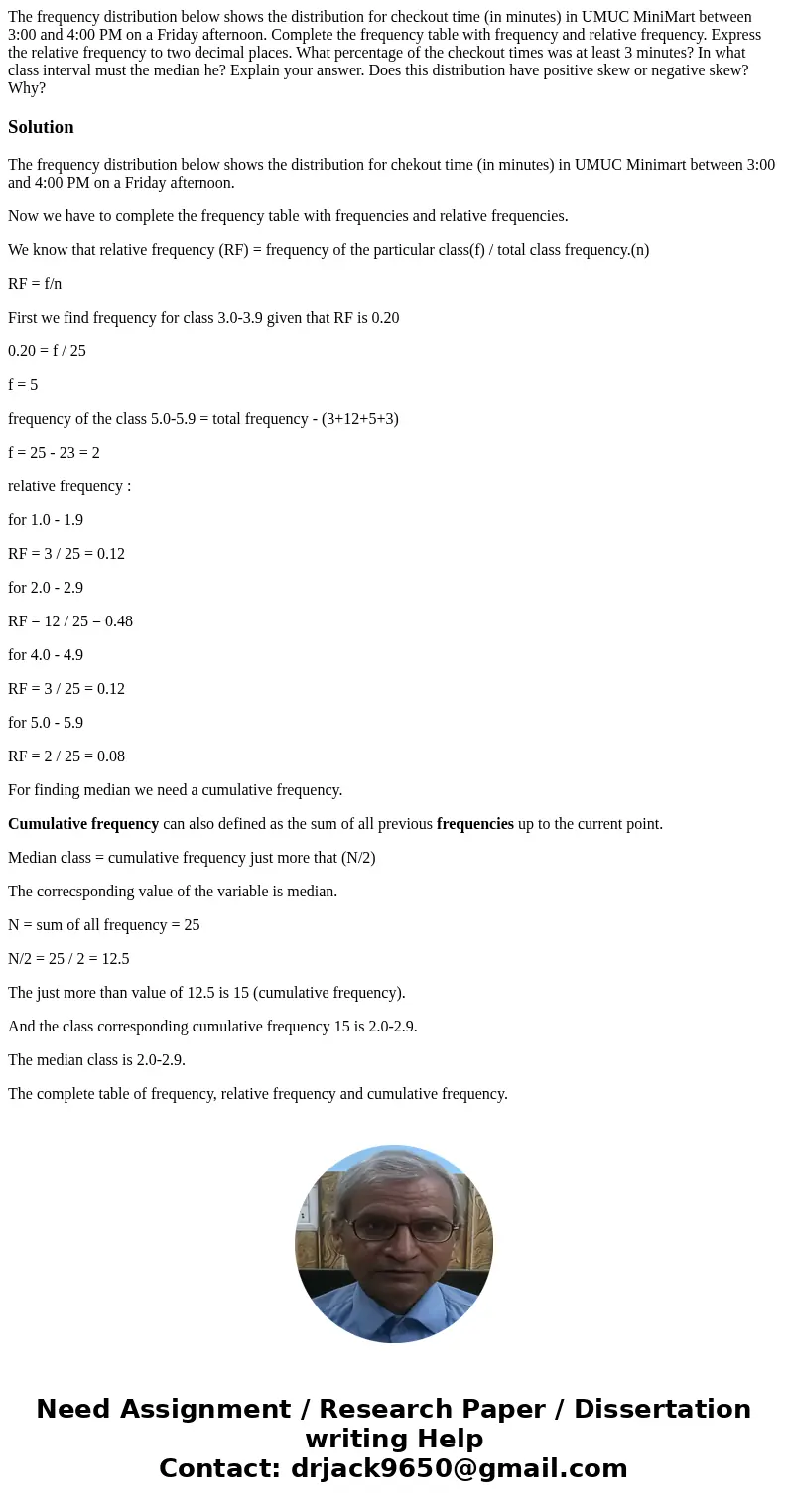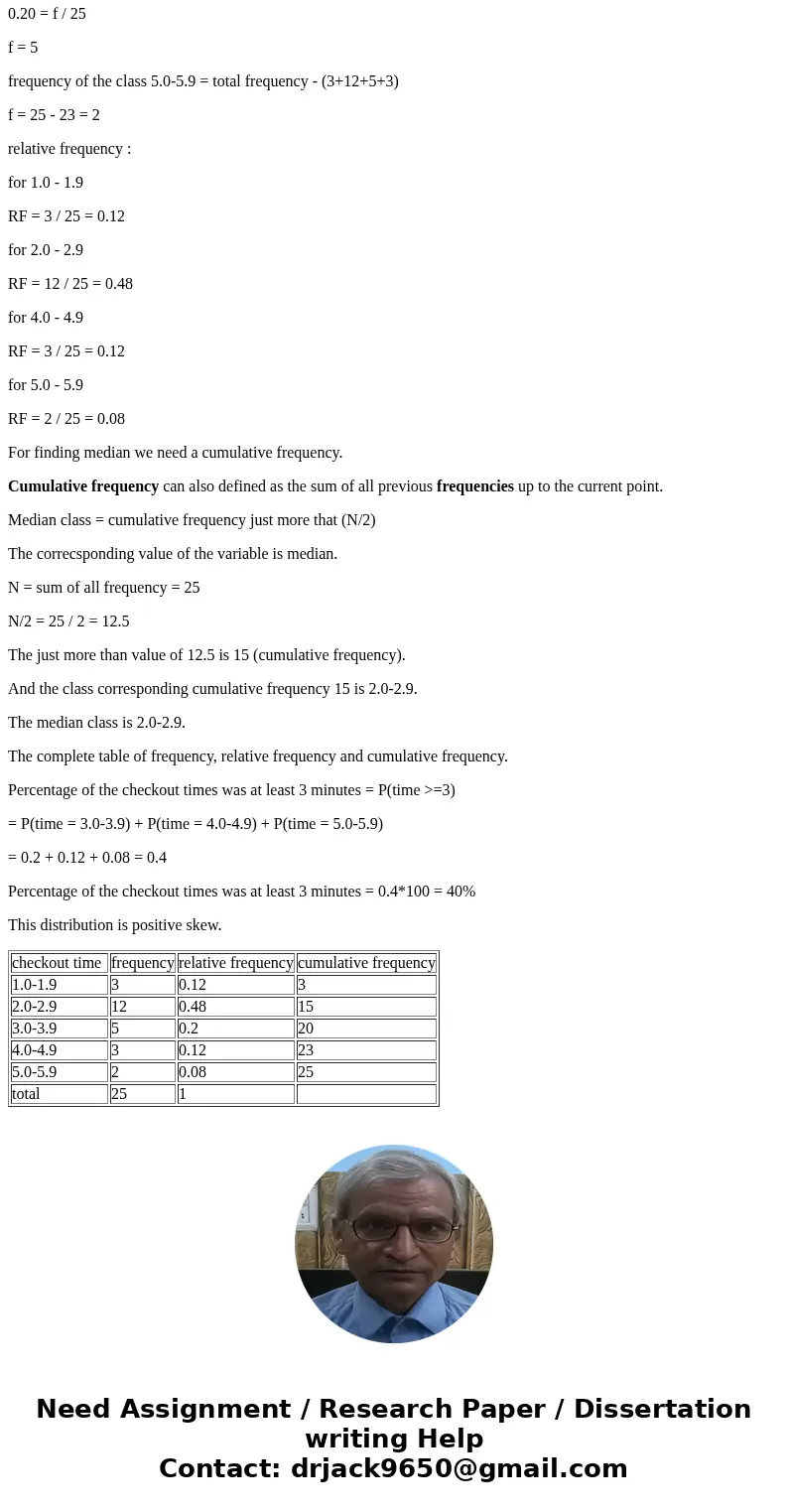The frequency distribution below shows the distribution for
Solution
The frequency distribution below shows the distribution for chekout time (in minutes) in UMUC Minimart between 3:00 and 4:00 PM on a Friday afternoon.
Now we have to complete the frequency table with frequencies and relative frequencies.
We know that relative frequency (RF) = frequency of the particular class(f) / total class frequency.(n)
RF = f/n
First we find frequency for class 3.0-3.9 given that RF is 0.20
0.20 = f / 25
f = 5
frequency of the class 5.0-5.9 = total frequency - (3+12+5+3)
f = 25 - 23 = 2
relative frequency :
for 1.0 - 1.9
RF = 3 / 25 = 0.12
for 2.0 - 2.9
RF = 12 / 25 = 0.48
for 4.0 - 4.9
RF = 3 / 25 = 0.12
for 5.0 - 5.9
RF = 2 / 25 = 0.08
For finding median we need a cumulative frequency.
Cumulative frequency can also defined as the sum of all previous frequencies up to the current point.
Median class = cumulative frequency just more that (N/2)
The correcsponding value of the variable is median.
N = sum of all frequency = 25
N/2 = 25 / 2 = 12.5
The just more than value of 12.5 is 15 (cumulative frequency).
And the class corresponding cumulative frequency 15 is 2.0-2.9.
The median class is 2.0-2.9.
The complete table of frequency, relative frequency and cumulative frequency.
Percentage of the checkout times was at least 3 minutes = P(time >=3)
= P(time = 3.0-3.9) + P(time = 4.0-4.9) + P(time = 5.0-5.9)
= 0.2 + 0.12 + 0.08 = 0.4
Percentage of the checkout times was at least 3 minutes = 0.4*100 = 40%
This distribution is positive skew.
| checkout time | frequency | relative frequency | cumulative frequency |
| 1.0-1.9 | 3 | 0.12 | 3 |
| 2.0-2.9 | 12 | 0.48 | 15 |
| 3.0-3.9 | 5 | 0.2 | 20 |
| 4.0-4.9 | 3 | 0.12 | 23 |
| 5.0-5.9 | 2 | 0.08 | 25 |
| total | 25 | 1 |


 Homework Sourse
Homework Sourse